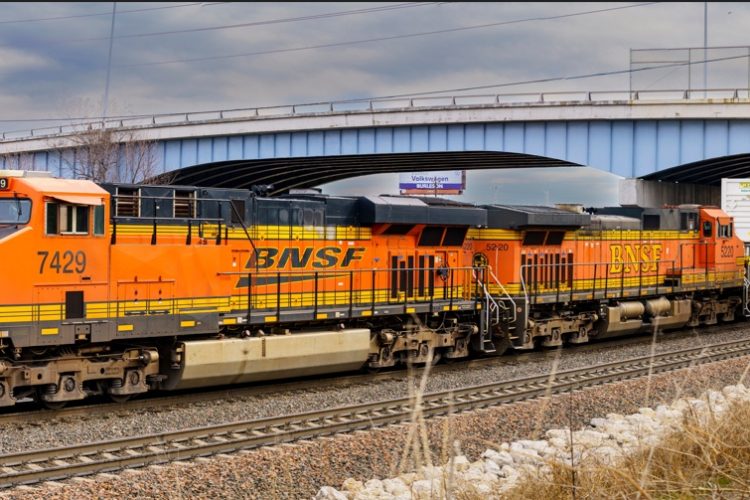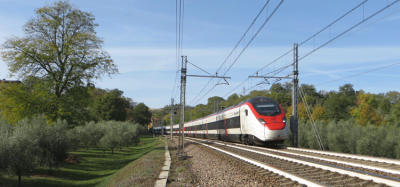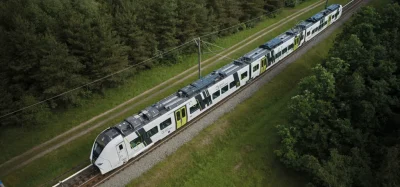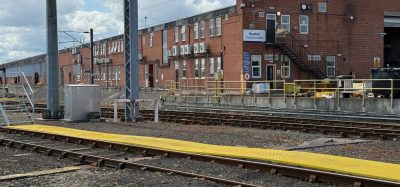Flash flooding vs freight rail
Posted: 9 July 2025 | Elizabeth Jordan - Global Railway Review | No comments yet
The recent flash floods that swept through Texas have delivered a stark and immediate lesson on the escalating vulnerability of critical infrastructure to extreme weather events.


While the human toll has been tragic, with over 100 lives lost and many still missing, the disruption to the state’s intricate freight rail system offers a sobering glimpse into the wider economic ramifications when such vital arteries are severed. This event serves as a crucial case study for nations globally, highlighting the urgent need for enhanced resilience in rail networks in the face of a rapidly changing climate.
Texas, a sprawling state with a robust industrial and agricultural base, relies heavily on its freight rail network to transport everything from crude oil and refined petroleum products to agricultural goods, chemicals, and manufactured products. The sheer volume and speed of the recent flash floods, particularly in the low-lying and riverine areas, overwhelmed existing drainage systems and infrastructure. Rail lines were submerged, track beds eroded, and in some instances, bridges were compromised or outright washed away.
Major freight rail operators like BNSF and Union Pacific, along with regional lines, were forced to halt or significantly delay operations across affected zones. Intermodal facilities, crucial hubs for transferring cargo between rail and truck, were closed due to flooding and power outages. Even after the immediate floodwaters receded, the assessment and repair of damaged tracks and signalling systems proved to be a time-consuming and labour-intensive process, leading to prolonged closures and bottlenecks. The pre-positioning of equipment and supplies, such as fuel cells and ballast, by rail companies, while a proactive measure, could only mitigate, not prevent, the widespread disruption.
Effects on the wider economy
The immediate consequence of rail disruptions is a significant slowdown in the movement of goods. For a state like Texas, which plays a pivotal role in national and international supply chains, this translates into substantial economic losses. Industries that rely on timely delivery of raw materials or export their finished products via rail faced immediate challenges. Farmers saw their crops at risk of spoilage, manufacturers experienced production delays due to lack of components, and retailers struggled with stock shortages.
The cumulative effect of these disruptions can ripple through regional and national economies, impacting GDP, employment, and investment.
Beyond direct losses, there’s a cascade of indirect economic impacts. Businesses incur additional costs due to rerouting shipments via more expensive modes like trucking, if even available, further straining the already tight trucking capacity. This can lead to increased prices for consumers, impacting inflation. Perishable goods face spoilage, leading to lost revenue. Furthermore, the delays affect just-in-time inventory systems, forcing companies to hold more stock, tying up capital and increasing warehousing costs. The cumulative effect of these disruptions can ripple through regional and national economies, impacting GDP, employment, and investment. AccuWeather’s preliminary estimate of $18 billion to $22 billion in economic loss for the Texas floods underscores the immense financial burden of such events, encompassing not just physical damage but also disruptions to commerce and supply-chain logistics.


Lessons for global freight rail resilience
The Texas floods offer critical lessons for rail systems around the world, particularly as climate change intensifies extreme weather events:
Proactive Infrastructure Hardening: Retrofitting existing rail infrastructure and designing new projects with future climate scenarios in mind is paramount. This includes elevating tracks in flood-prone areas, enhancing drainage systems, using more resilient materials, and strengthening bridge foundations. The identified $50 billion in flood control needs for Texas, with only a fraction being addressed, highlights a global shortfall in investment in resilience.
Advanced Warning and Monitoring Systems: Investing in sophisticated flood forecasting models, real-time water level sensors, and AI-driven predictive analytics can provide earlier warnings, allowing for proactive measures such as rerouting trains, securing vulnerable equipment, and even pre-emptively shutting down sections of track. The lack of adequate warning systems in some of the most severely hit areas of Texas underscored this critical gap.
Diversification and Redundancy: Relying on single, vulnerable rail corridors creates chokepoints. Developing alternative routes and ensuring redundancy in the network can help mitigate the impact when one section is compromised. This also involves fostering strong intermodal connections, allowing for smoother transitions to other transport modes when rail is disrupted.
Nature-Based Solutions: Integrating natural solutions like wetland restoration, reforestation, and sustainable urban drainage systems alongside traditional engineering can help slow runoff, increase infiltration, and reduce the overall volume of water overwhelming infrastructure.
Cross-Sector Collaboration and Planning: Effective disaster response and long-term resilience require seamless coordination between rail operators, government agencies (local, state, and federal), emergency services, and other critical infrastructure providers. Integrated planning that considers the interdependencies of different sectors is crucial.
The Texas floods serve as a stark reminder that extreme weather is not an isolated incident but a growing threat to global supply chains and economic stability. By learning from these devastating events, nations can prioritize investment in resilient rail infrastructure, enhance preparedness, and work collaboratively to safeguard the vital arteries of commerce in an increasingly unpredictable world.
Stay Connected with Global Railway Review — Subscribe for Free!
Get exclusive access to the latest rail industry insights from Global Railway Review — all tailored to your interests.
✅ Expert-Led Webinars – Gain insights from global industry leaders
✅ Weekly News & Reports – Rail project updates, thought leadership, and exclusive interviews
✅ Partner Innovations – Discover cutting-edge rail technologies
✅ Print/Digital Magazine – Enjoy two in-depth issues per year, packed with expert content
Choose the updates that matter most to you. Sign up now to stay informed, inspired, and connected — all for free!
Thank you for being part of our community. Let’s keep shaping the future of rail together!
Related topics
Cargo, Freight & Heavy-Haul, Freight, Funding & Finance, High-Speed Rail, Infrastructure Developments, Operational Performance, Safety







